Prior to the development of circular, corrugated, galvanized steel grain bins, prefabricated, non-corrugated steel bins were used because of cost, portability, rodent resistance and waterproof features, but bin capacity was limited. In the 1920's, corrugated bins, which were larger in size and could support greater loads, were developed and became commercially available. In the 1930's, research programs advanced their use, notably research by F. C. Fenton at Kansas State College of Agriculture and Applied Science and T. E.
USA
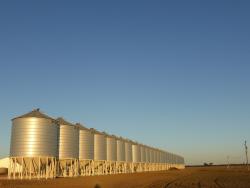

Historically, Farm Tillage Tools Were Designed Without Scientific Knowledge Of How Tools Work The Soil. Thus, A Tool Designed To Operate In One Soil Pulled By A Mule Might Not Operate Satisfactorily In Another Soil Or When Pulled By A Tractor At Higher Speeds. Traction And Flotation Problems Appeared With The Introduction Of Tractors. The Importance Of Developing A Scientific Approach To The Study Of Tillage And Traction Became Apparent During The Transition From Animal To Mechanical Power.

Slow Moving Vehicle (SMV) Emblem Makes Significant Contributions To Agricultural And Highway Safety Worldwide. 1961- 63 Developed By Kenneth A. Harkness, Department Of Agricultural Engineering On The Ohio State University Campus. 1964 Became An ASAE Standard 1968 Specified In National Uniform Vehicle Code 1971 First Asabe Standard Ratified By American National Standards Institute (ANSI). Became Occupation Safety And Health Act (OSHA) Regulation. Ohio Farm And Home Safety Committee Provided Leadership
In Achieving Acceptance Dedicated 1992
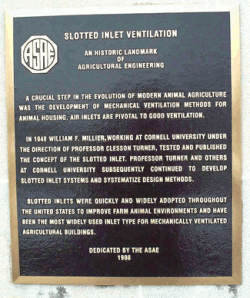
A Crucial Step In The Evolution Of Modern Animal Agriculture Was The Development Of Mechanical Ventilation Methods For Animal Housing. Air Inlets Are Pivotal To Good Ventilation. In 1948 William F. Millier, Working At Cornell University Under The Direction Of Professor Clesson Turner, Tested And Published The Concept Of The Slotted Inlet. Professor Turner And Others At Cornell University Subsequently Continued To Develop Slotted Inlet Systems And Systematize Design Methods.
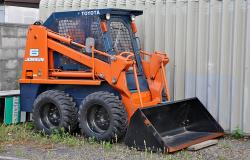
Brothers Cyril and Louis Keller designed and built the first small, lightweight, three-wheel, front-end loader in their machinist-blacksmith shop in Rothsay, Minnesota. A local farmer wanted to mechanize cleaning manure from his obstacle-filled, two-story turkey barn. The machine, first used in 1957, was able to turn completely around within its own length. Melroe Manufacturing Company, Gwinner, ND purchased the rights to the Keller loader and hired the Kellers to continue development of the loader in 1958.
In 1850, E. W. Quincy of Illinois patented an open-roll ear-snapping mechanism. A series of innovations led to corn heads for combines. Harvesting corn with corn pickers using open rolls on corn pickers after 1925 proved to be dangerous as farmers often needed to clear stalks from the rolls. In 1885, E. M. Aiken, Dawson, ND, patented shielded snapping rolls with flat plates above the rolls. C. K Shedd and E. V. Collins, Ames, IA, patented a more aggressive shielded snapping device in 1941 which was later used on sweet corn pickers.
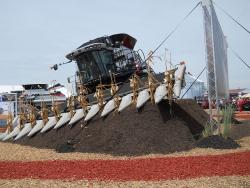
In 1941, near Palouse, Washington, Raymond A. Hanson conceived of a self-leveling mechanism for hillside combines. On the steep hills in the Pacific Northwest, leveling is necessary to save grain because of the gravity grain separation mechanism. Before the Hanson invention, manual leveling required a person to stand on the combine platform and adjust the machine to the lay of the land - a hot, tedious job. The grain-saving attributes of Hanson's invention were probably more important than the labor saving, although both were valuable.

Scoates Hall 1932 A Historic Landmark of Agricultural Engineering Named for Daniels Scoates Designer of this Building Professor and Head Department of Agricultural Engineering 1919 to 1939 Eleventh President of ASAE Teacher, Writer, Engineer Counselor to Youth, His Example Still Inspires. Dedicated by the American Society of Agricultural Engineers 1978
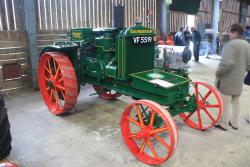
The Rumely Companies, which operated in La Porte, Indiana, from 1853 to 1931, produced a variety of equipment including threshers and steam engines, which helped to change the nature of American and world agriculture. The revolutionary OilPull Tractor, which was introduced in 1910, used a unique carburetion system developed by John Secor, the Company's Chief Engineer. The OilPull tractor efficiently converted a low cost petroleum product to mechanical power, greatly reducing the need for animal and steam power on American farms. Dr.
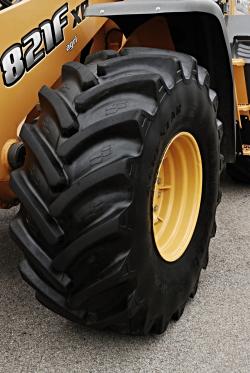
Early tractors were massive and expensive. Their steel lug wheels gave poor traction and a rough ride. Lugs were prohibited on many roads. 1926 Hoyle Pounds modified a Fordson tractor with zero pressure truck tires on special rims to improve performance on sandy soils in Winter Garden, FL.
A successful business resulted. In 1929 Hessel Roorda equipped Farmall tractors with low pressure rubber tires to pick corn in muddy fields near Rock Valley, IA. Farmers found they performed well in all conditions.
Innovations
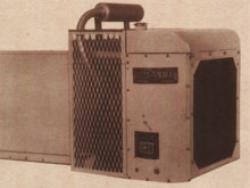
The refrigeration units placed on trucks in 1938 by Thermo King Corp. revolutionized the transportation of perishable foods. Today they are a common sight on streets everywhere. Consumer demand for meat, poultry, produce and dairy products increased at an astounding rate. These installations and…
Read More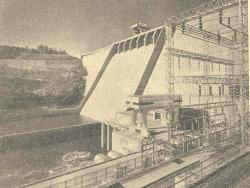
The integration of pump and turbine was the first of many to be installed in power-plant systems in the United States. It was the largest and most powerful in the world. As a "pump storage" unit in the Tennessee Valley Authority's system, it effected significant economies in the generation of…
Read More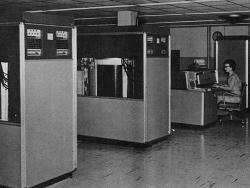
The IBM 350 disk drive storage development led to the breakthrough of on-line computer systems by providing the first storage device with random access to large volumes of data. Since its introduction on September 4, 1956, it has become the primary computer bulk-storage medium, displacing…
Read More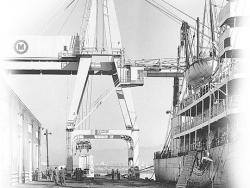
The world's first high-speed, dockside container-handling cranes reduced ship turnaround time from three weeks to eighteen hours. They became the model and set the standard for future designs worldwide. In service January 7, 1959, the A-frame cranes built at Encinal Terminals in Alameda,…
Read More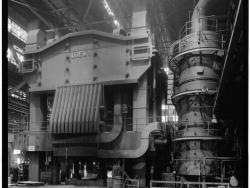
This hydraulic closed-die press, among the largest fabrication tools in the world, has had a profound influence in America's leading role in commercial aircraft, military aircraft, and space technology. As part of the same Heavy Press Program that created the Mesta press, the Wyman-Gordon press…
Read More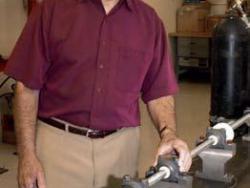
The Southwest Research Institute Split-Hopkinson Pressure Bar apparatus is a mechanical test instrument used to characterize the dynamic response of materials at high strain rates (typical of impacts and explosions).
The apparatus, based on devices invented by Bertram Hopkinson and…
Read More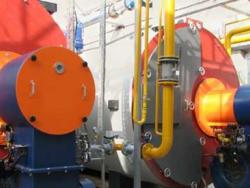
Published in 1914-15, the ASME Boiler and Pressure Vessel Code (BPVC) was the first comprehensive standard for the design, construction, inspection, and testing of boilers and pressure vessels. With adoption in the United States and use in many countries, it has contributed significantly to…
Read More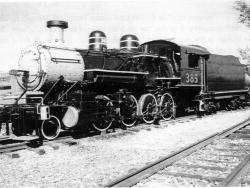
This collection of equipment—all of it maintained in operating condition and used for educational purposes—was established in 1987. It spans the period from the late 19th century to the 1940s, when steam was the prime motive force for most U.S. industries, including rail and marine…
Read More
The DWP was the first mechanized, compact service-line trencher developed for laying underground water lines between the street-main and the house. This machine, first produced in 1949, replaced manual digging, thus making installation of running water and indoor plumbing affordable for the…
Read More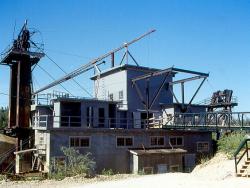
This floating dredge is one of the last mammoth gold dredges in the Fairbanks Mining District that traveled an ancient stream bed, thawing the ground ahead of it and scooping up the gravel. During 32 years of operation, a fortune in gold washed through its sluices. Ladder dredges came to Alaska…
Read More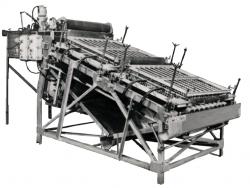

Designed by Alden “Doc” Laborde, Mr. Charlie is the first offshore drilling rig that was fully transportable, submersible and self-sufficient, allowing it to drill more than 200 oil and gas wells along the Gulf Coast between 1954 and 1986.
Laborde, a young U.S. Navy engineer, had the…
Read More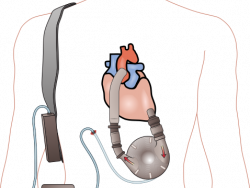
This is the first extremely smooth, surgically implantable, seam-free pulsatile blood pump to receive widespread clinical use. In its use in more than 250 patients, it has been responsible for saving numerous lives. When used as a bridge to transplant, the pump has a success rate greater than 90…
Read More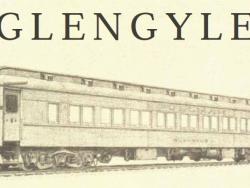
The Glengyle is the earliest known survivor of the fleet of heavyweight, all-steel sleepers built by Pullman Company. The design was introduced in 1907 as a marked improvement over the wooden version then in use. Some 10,000 were built, in various configurations, the last in 1931. The Glengyle…
Read More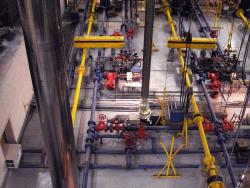
The precision "choreographed" staging of Radio City Music Hall offers size and versatility, unlike any other. Built in 1932 by Peter Clark, its innovative elevator system is a forerunner of other stage designs (including the Metropolitan Opera House) as well as aircraft carrier systems built in…
Read More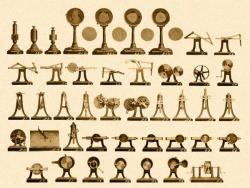
Kinematics is the study of geometry of motion. Reuleaux designed the models in the Cornell collection as teaching aids for invention, showing the kinematic design of machines. The mechanisms in the collection represent the fundamental components of complex machines and were conceived as elements…
Read More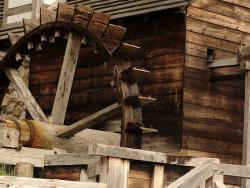
The Saugus Ironworks, the first commercial ironworks in North America, was an impressive technological achievement for an early colony. The same basic processes are used today: reducing iron oxide with carbon to produce metallic iron that can be cast in a mold, producing wrought iron by puddling…
Read More
Designed in 1873 by Christopher Latham Sholes, with Carlos Glidden, Samuel Soulé and Mathias Schwalbach, the Sholes & Glidden 'Type Writer' was the first commercially successful device that rapidly printed alphanumeric characters on paper in any order.
Manufactured by E. Remington…
Read More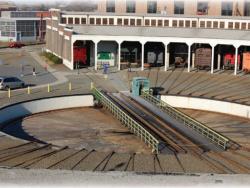
A majority of the buildings, used originally in steam locomotive repair and maintenance, are still intact, including the backshop (erecting shop), roundhouse, flue shop, paint shop, and parts storage buildings. The 37-stall roundhouse is one of the largest remaining roundhouses in North America…
Read More
This is one of the earliest uses of engineered water supply and irrigation systems in the United States. The first of eight original acequias was under construction in 1718 and two are still in operation. The remains of one are visible on the grounds of the Alamo. The Acequias of San Antonio are…
Read More

